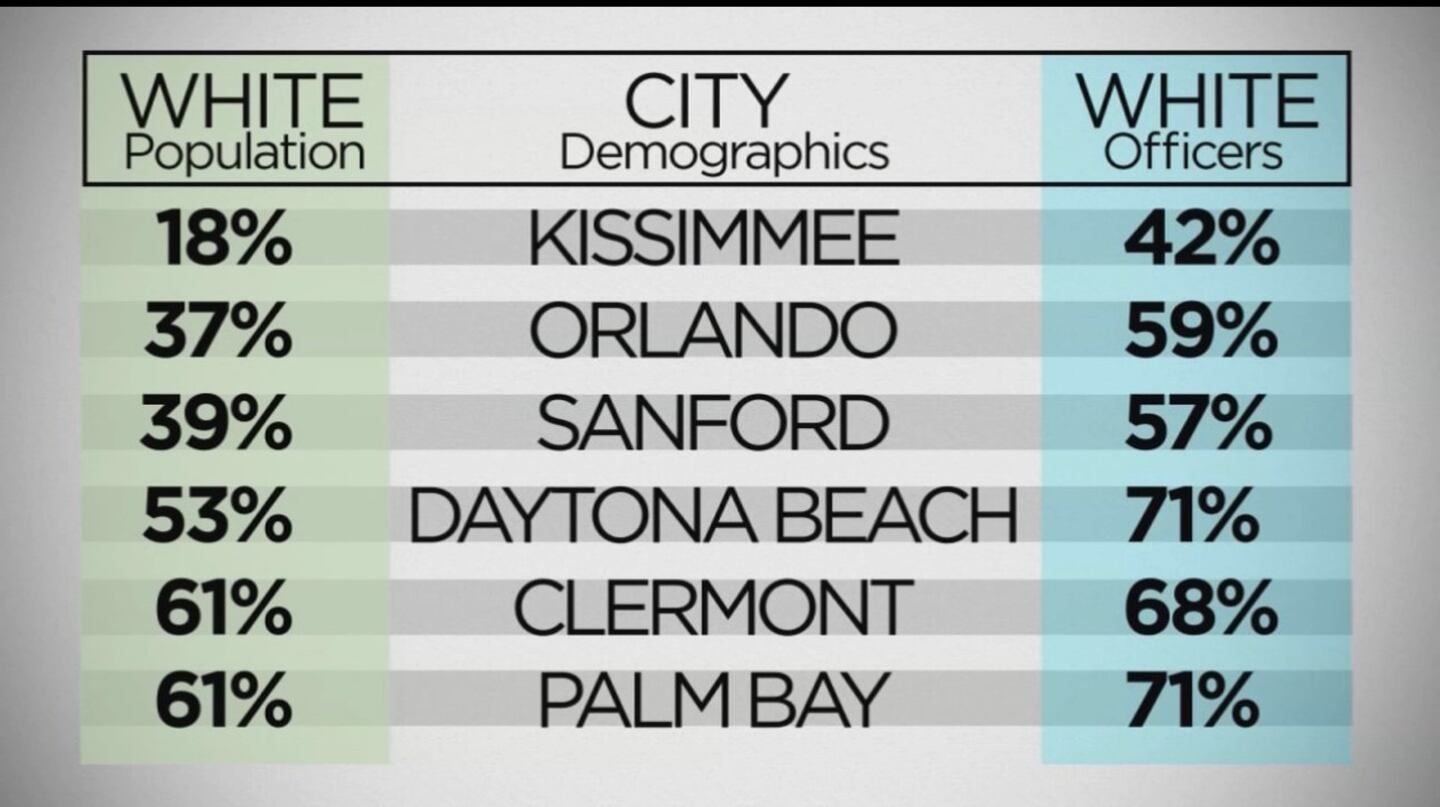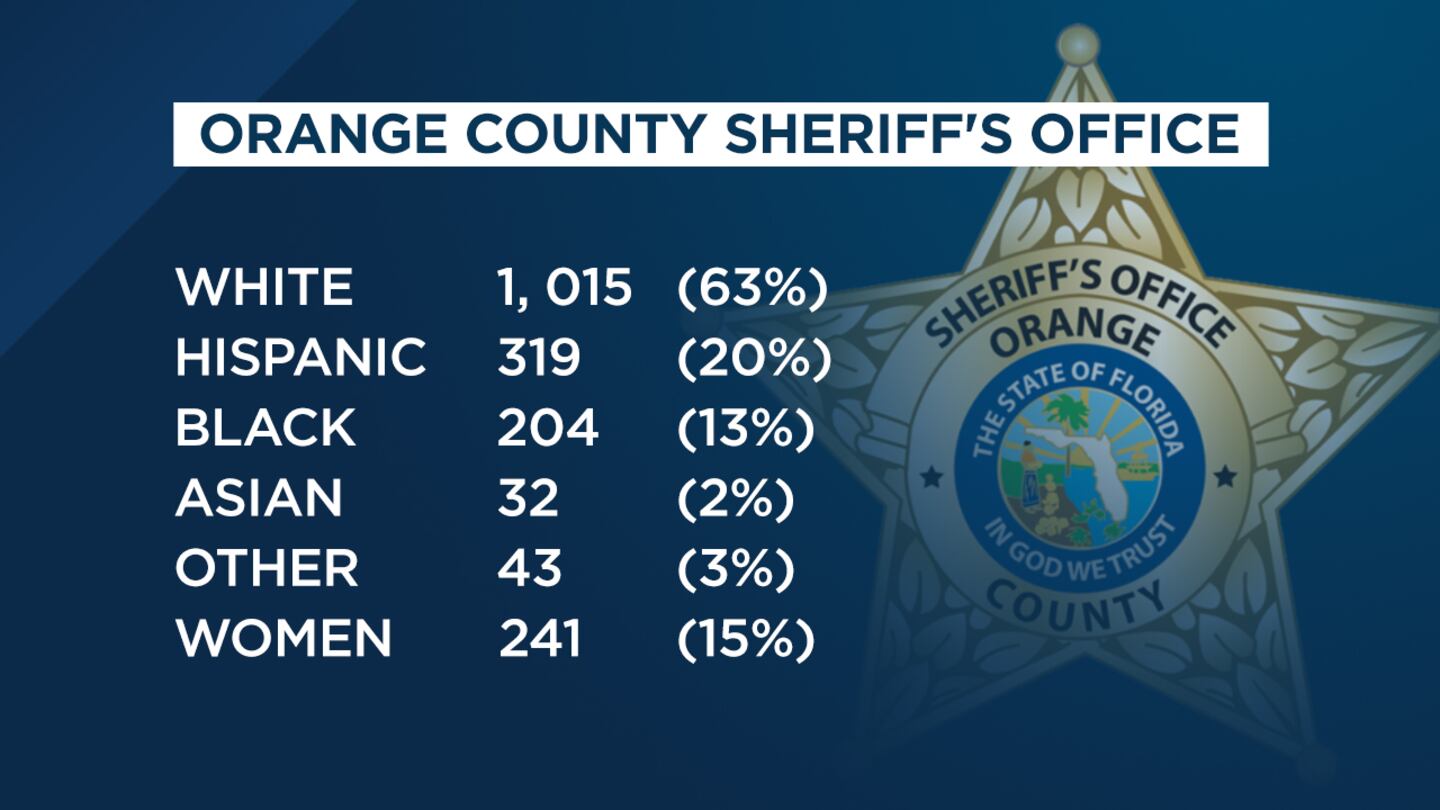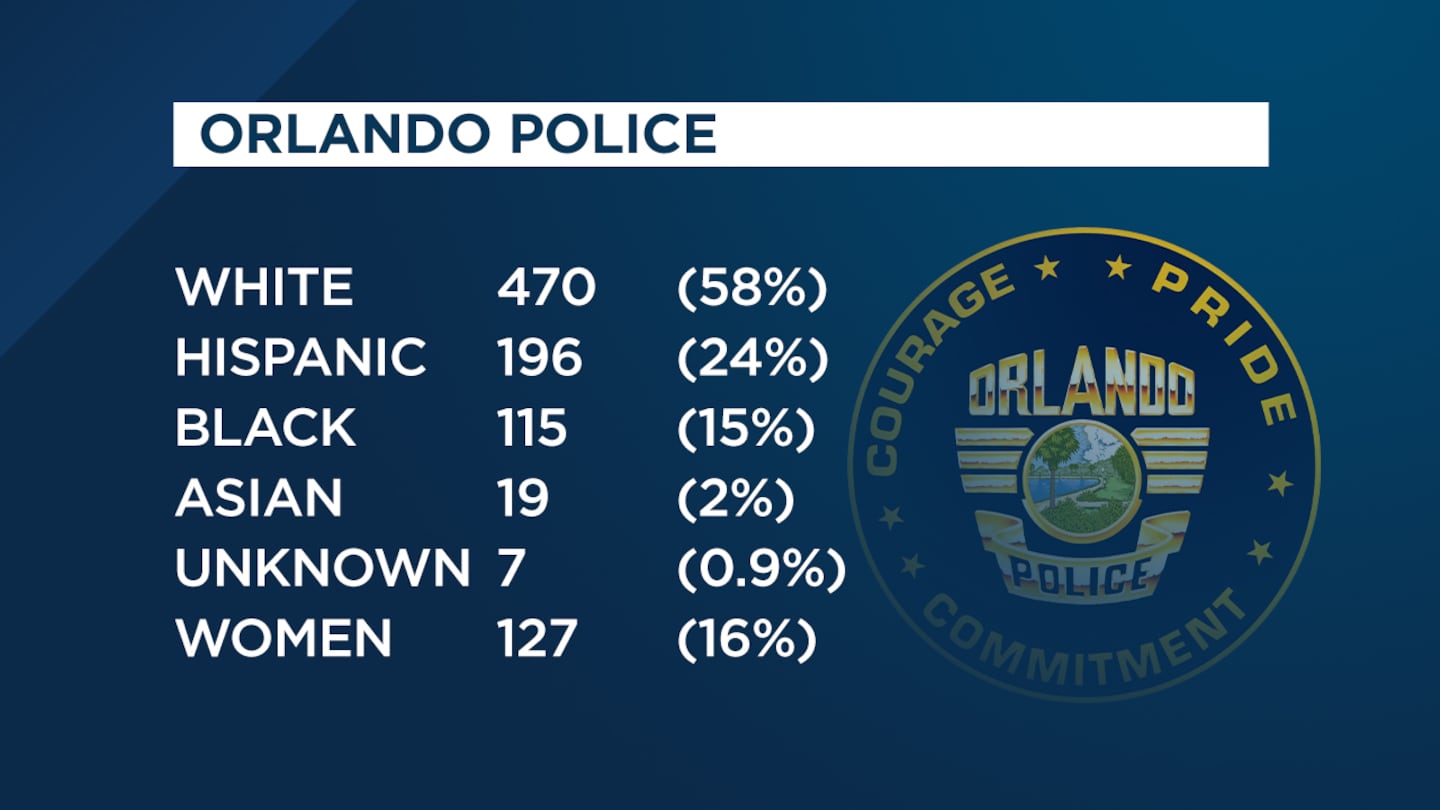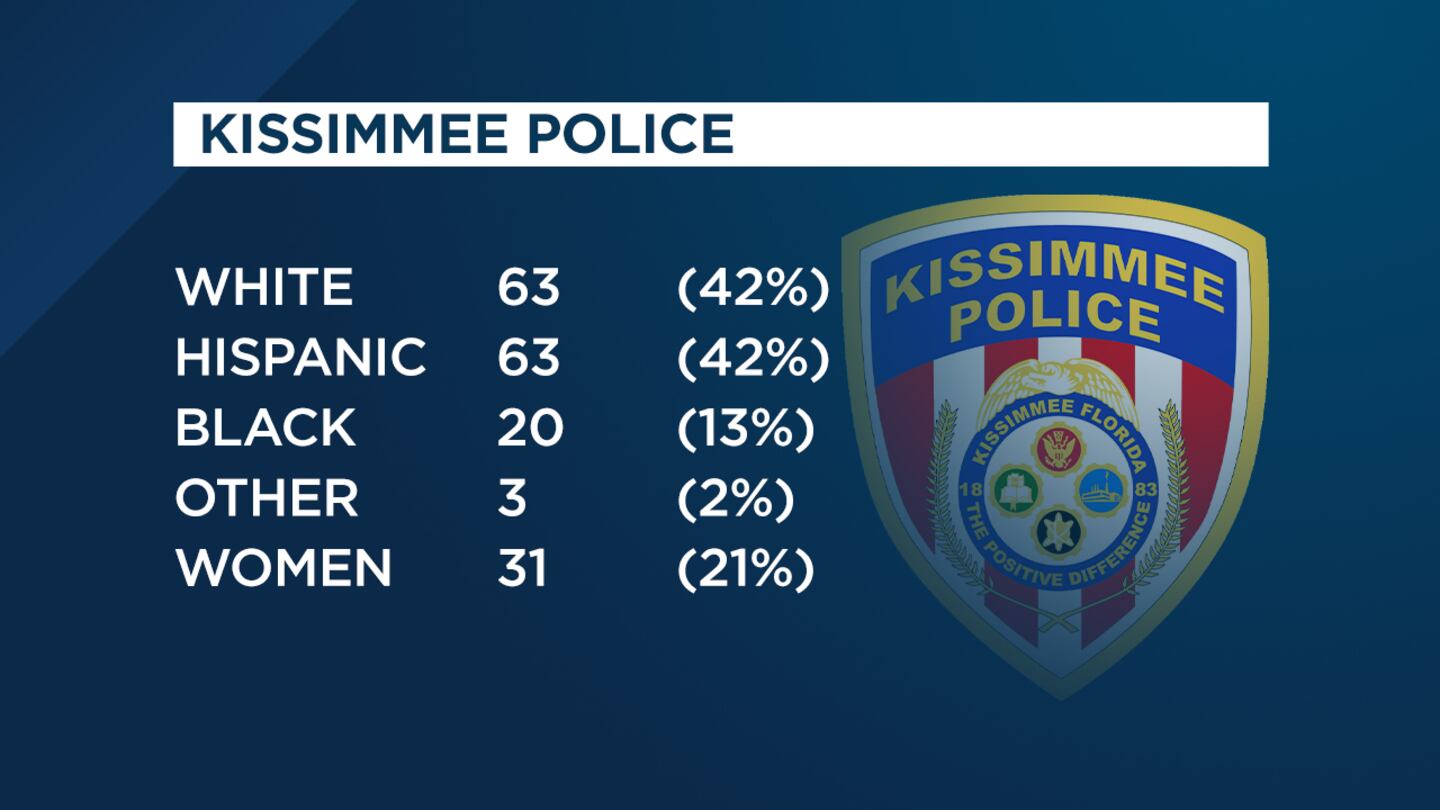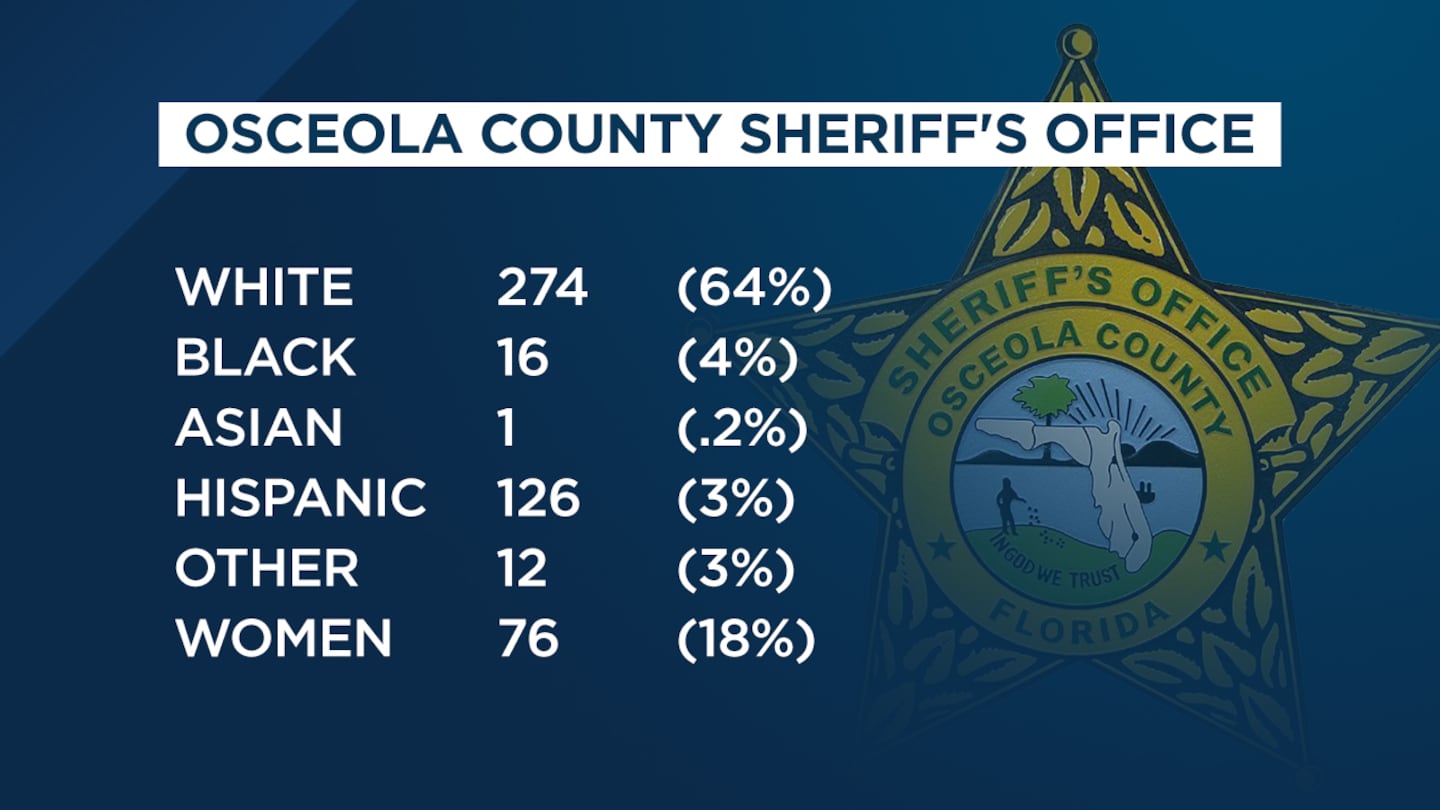ORLANDO, Fla. — Orange County Undersheriff Mark Canty is aware of how great a responsibility he has as the number two in charge at the department, one of the largest law enforcement agencies in the country. It’s not just the administrative load he carries, but public perception, and the reality that there are too few people nationwide who look like him in top command staffs and officer ranks.
“When I got into law enforcement my mom was afraid. She didn’t want me to be in law enforcement because she knows that law enforcement officers are in the middle of it, and they could be killed. If I was working at a bank or an IT company, the chances of me being killed are dramatically reduced, but that chance in law enforcement is quite high,” Canty said.
Canty started his career at the Orlando Police Department. He left as the SWAT commander to work for the Sheriff’s Office when then Orlando Police Chief John Mina was elected sheriff. Mina’s pick for undersheriff was intentional. Canty is African American and grew up in Pine Hills, a predominantely Black neighborhood that’s been riddled with crime over the years.
“I think it’s important for the agency to look like the community we serve. I think it gives people confidence in the agency, having people who have a variety of experiences and perspectives helps us make better decisions. It’s a huge responsibility because not only do I have to make sure that I’m helping lead this agency in the right direction. I’m also a role model both internally and externally for people to say, ‘They are doing it right,’” Canty said.
Law enforcement agencies have been under harsh scrutiny for years. But the conversation around policy brutality became more widespread last year after the world watched a Minneapolis Police officer, Derek Chauvin, kill Geroge Floyd by holding his knee to Floyd’s neck for 9 minutes and 29 seconds in broad daylight. And the demands to overhaul what policing looks like, and who’s policing communities, are still loud and clear. In the crowd at most of the protests in Orlando, you’d find community advocate, Miles Mulrain.
“A lot of these officers that are in these neighborhoods, they don’t have any kind of relation or any kind of investment. They look at it like, ‘I’m going to work to patrol this dangerous area every day,’ kind of like a soldier going to war,” Mulrain said.
READ: Jury selection begins for woman charged with murder for toddler’s beating death
9 Investigates compiled demographic information from Central Florida police and sheriff’s agencies, totaling about 7,828 officers overall. Our analysis found 72 percent of officers are still white, though the number drops to about 58 percent in Orlando, the largest city in the region. The white population in some of the larger cities ranges from 18 to 61 percent. And only 15 percent of officers, no matter their race, are women.
Dr. Randy Nelson, chair of criminal justice at Bethune-Cookman University, said diversity has to be intentional. “When I hear someone say they don’t want to hire or promote an officer just because of their race or gender, it reminds me that you’re saying diversity and merit are mutually exclusive and they’re not. I think you have to be intentional,” Dr. Nelson said.
The Orange County Sheriff’s Office reported 1,613 deputies in 2020. Here’s the breakdown by race and gender:
The Department told us that most of its deputies have been with the Department for 20 or 30 years, meaning they were hired under previous administrations. Since Sheriff Mina took office in 2018, the Department told us that 45 percent of newly hired deputies have been white, 32 percent Hispanic, 15 percent African American and about 3 percent Asian.
READ: How Central Florida law enforcement agencies are working to add diversity the force
In 2020, the Orlando Police Department received about 2,800 completed applications. Ultimately, 78 applicants were hired, and when we compared the numbers to those hired in 2019, the Department increased the percentage of African Americans, Hispanics and women, continuing a trend of slowly reducing the number of white officers and balancing the diversity of officers you see on the streets. “Historically it has never mirrored the community that we serve, but it’s not because of a lack of desire to reflect that,” Chief Orlando Rolon said, who is the Department’s first Hispanic police chief.
Here’s the breakdown of demographics for its officers by race and gender:
Rolon said recruitment has been complicated in the last year, following worldwide protests against police brutality because of the murders of George Floyd, Breonna Taylor, Rayshard Brooks, and even locally, Salaythis Melvin.
“What we’re struggling with is the perception of the profession. For example, when you think about some of the negative stories that have been covered, such as using excessive force,” Rolon said.
One of the newest African American officers hired to work for OPD, Wakens Leonard, said he’s wanted to be an officer since he was a child, gaining interest after signing up for the police explorers’ program in South Florida.
READ: Central Florida remembers George Floyd 1 year after his murder
“There are more people that do look like me, (who are) a lot more hesitant, and their feelings are validated, so sometimes it takes starting them (with the) youth,” Leonard said.
9 Investigates reviewed videos provided to us by the Orange County Sheriff’s office showing the verbal attacks on local law enforcement during social justice protest in the summer of 2020.
“You’re kind of caught in the middle, and you never feel comfortable in either world. You’re a law enforcement officer, you’re African American, you know, where do you really fit it, so you understand both sides,” Undersheriff Mark Canty said.
READ: Grand jury convened to hear evidence in Trump criminal probe, report says
In the last year, the Department started junior reserve programs at Jones and Lake Nona High Schools. Some 200 students have already applied to join, which Rolon believes will in turn create a path toward a career in law enforcement. “The unfortunate thing is the lack of qualified, highly qualified applicants that we’re seeking to try to join those ranks,” Chief Rolon said.
The Department’s recruiting team has also focused on targeting organizations and events including women athletic programs, officers from other agencies with previous experience, multi-cultural events and job fairs, and relationships built with college professors in various criminal justice-related fields.
READ: Changes coming to Florida unemployment benefits, many Floridians still owed and locked out
Kissimmee Police Chief Jeff O’Dell told us he’s set a goal to develop and grow a department that mirrors the community, and we found his department’s demographics numbers support that. “That was the stated goal, so that was a directive given to our recruiting unit. We then began sponsoring recruits because if you only rely on those in the academy that kind of pay their own way, and if you look at those numbers, at least in Central Florida, a majority of those are white males,” Chief O’Dell said.
The Department has about 159 officers. Here’s the race and gender demographics breakdown:
Chief O’Dell told us he believes hiring a police force that is more reflective of the community garners instant credibility. He also said he encourages his officers to look for positive ways to engage the community and recruit other good officers. “They go out and recruit people they know of. If we’ve got prospective applicants they come for a ride-a-long. We want them to get a feel for the police department, and they see people who look like them or grew up in similar neighborhoods or community, then I believe they’re more apt to come here,” Chief O’Dell, said.
Here’s the demographic breakdown for the 429 deputies with Osceola County Sheriff’s Office:
“You might have 100–200 officers, but if out of those 200 officers you got 10 bad officers who constantly terrorize or harass the public and they have the most interactions with a community, then it doesn’t matter, because all the community see is this group of bad officers that do bad things to us,” Mulrain said. “Diversity is needed, but diversity is needed from the top to the bottom.”
Dr. Nelson told 9 Investigates that at Bethune-Cookman University he has shifted his focus to encourage more of the students to join a law enforcement agency with the goal of becoming the chief or sheriff. “For law enforcement or any other profession that has that level of impact on an individual or community, damn right they should be held to a higher standard and they should be first to say that, and it has to start at the top. That’s why here at Bethune-Cookman University we’re intentional. I’m not trying to produce a police officer. I’m trying to produce the next Chief Rolon or the next Sheriff Mina. I want folks to lead those organizations because at this point it’s about leadership.”
READ: Documentary highlighting soldiers’ struggle with PTSD has local ties, to screen in Orlando
“We have a very checkered past and everyday it’s a struggle to get over that, and as you look at our numbers and you look at what we have here, we’re taking is seriously,” Undersheriff Canty said.
A sampling of the larger agencies in Central Florida shows about 804 supervisory or ranked officers or deputies. About 73 percent are white. An estimated 12 percent, no matter the race, are women.
READ: 2 ‘fist-bumping’ former Colorado cops charged in violent arrest of elderly woman with dementia
Chief Rolon told us his focus has been on promoting women to sergeants to create a larger pool of women to choose from long-term. But we asked about his recent decision (not?) to promote a Black woman to deputy chief - which would have diversified the all-male top command staff. “My job will be to continue to promote the highly qualified individuals who merit the promotion, not just because of the color of their skin or not just because of their ethnic background,” Chief Rolon said.
“To say that I’m not going to put someone in those positions because of a merit issue tends to say that because of their race or gender, they’re not qualified for the position. They should say, ‘We tend to promote those we are comfortable with’ and be honest about it, as opposed to, ‘Well, you want us to hire someone because of this or this.’ No, we want you to hire someone because they’re good,” Dr. Nelson said.
Click here to download the free WFTV news and weather apps, and click here to watch the latest news on your Smart TV.
©2021 Cox Media Group
